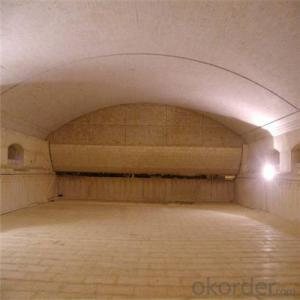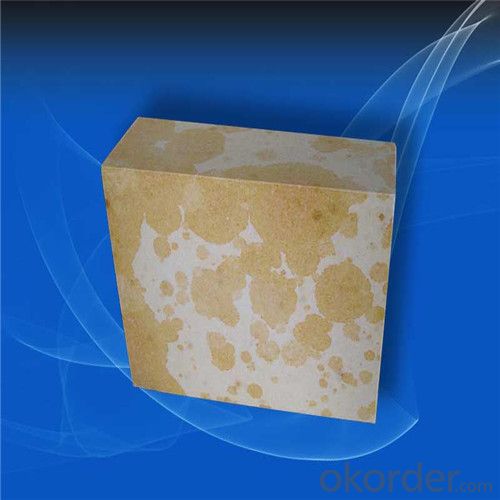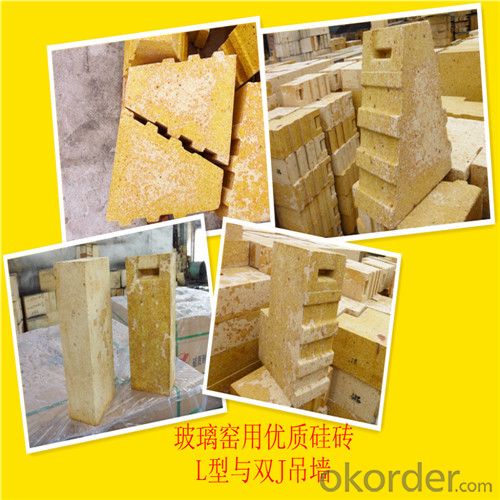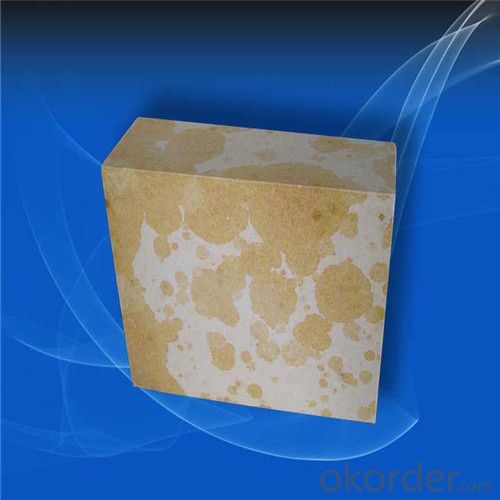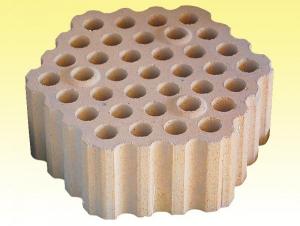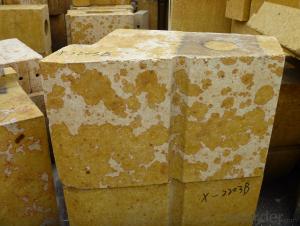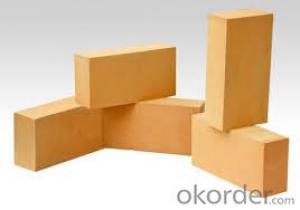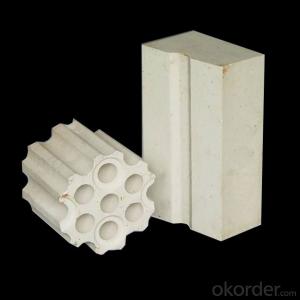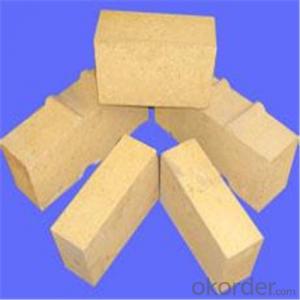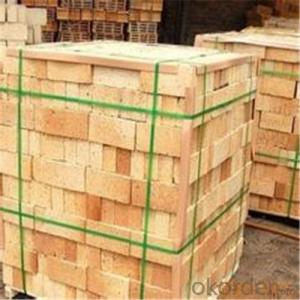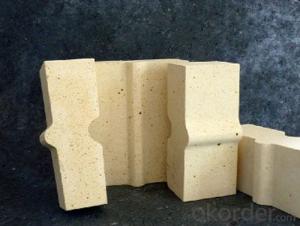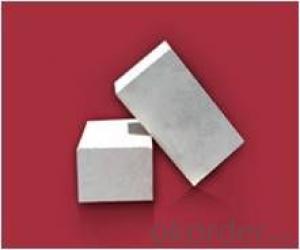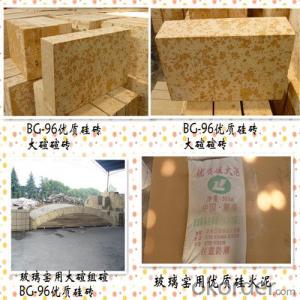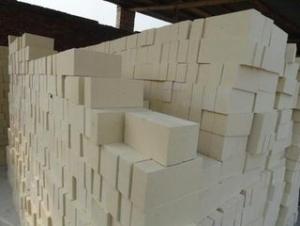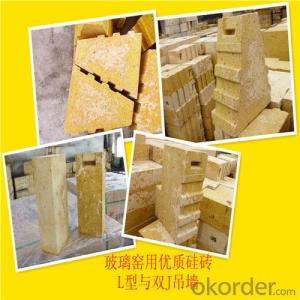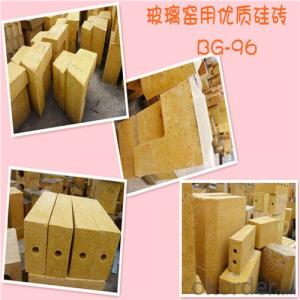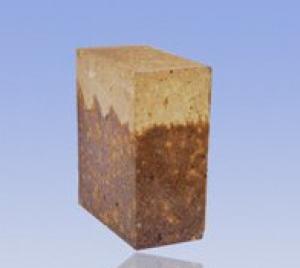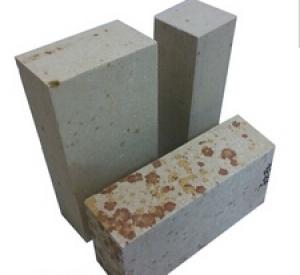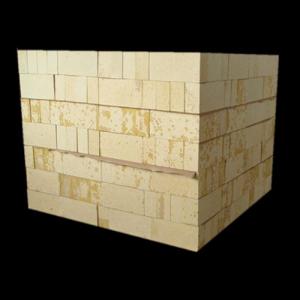Silica Brick - High Refractoriness Under Load
- Loading Port:
- Tianjin
- Payment Terms:
- TT OR LC
- Min Order Qty:
- 10 m.t
- Supply Capability:
- 10000000 m.t/month
OKorder Service Pledge
OKorder Financial Service
You Might Also Like
General Information of Silica Brick
CMAX silica brick is a kind of acid refractory product which is mainly made of tridymite and cristobalite, and a small amount of quartz and vitreous..
Feature of Silica Brick
Superior resistance to acids (including oxidizing)
Resistance to chlorine
Resistance to thermal shock and pressure changes
Low thermal and chemical expansion
Technical Data of Silica Brick
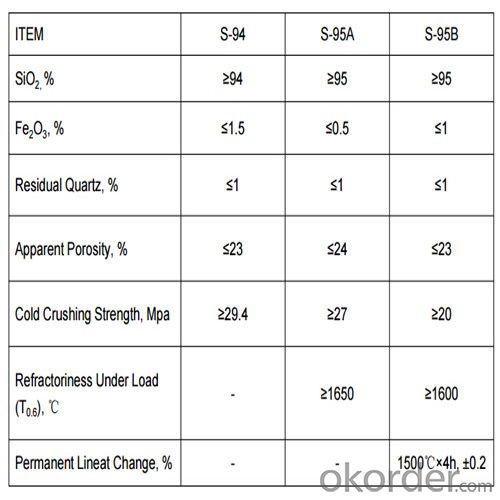
FAQ
Q1: How do you control the products quality?
A1: With strict quality control system throughout the materials selection and production process, our refractory and ceramic fiber products quality is effectively controlled to meet customer requirements.
From the raw materials selecting, our quality control begin. The quality certificates of raw materials are required and each batch will be tested before using. During production, the quality control are conducted by workers and then each piece will be sorted and examined by quality supervis
Q2: What`s the lead time for my order?
A2: It depends on customers’ requirements and our production schedule. And usually we need 30-60 days for refractory bricks,10-25 days for unshaped refractory materials and 10-20 days for ceramic fiber blankets.
Q3: Can you offer Door-to-Door delivery?
A3: Yes, but only for some countries such us U.S., UAE, Saudi Arabia, Iran, and Russia, etc.
- Q: The hot blast stove when the temperature did not rise against the brick interface decreased
- Insulation of hot blast stove, key insulation silica brick hot stove, hot blast stove is shutdown or need repairing in blast furnace.
- Q: What is the effect of the content of silicon nitride in silicon nitride bonded silicon carbide brick on the use of electrobath? Thank you
- The main damage of silicon carbide side wall brick is stress damage, not chemical erosion. Chemical damage is formed prior to the formation of the groove, and the damage to the chemical erosion is little after the formation of the groove.
- Q: Semisilica brick interpretation
- High temperature volume stability. Volume change is small.
- Q: Semisilica brick, clay brick, high alumina brick and what is the difference?
- The share of A12O3 and SiO2 is different
- Q: Which material is good for furnace refractory?
- Kiln types of refractories is very extensive, selection of refractory materials according to the type of furnace furnace temperature and use of selected refractory material, refractory material is divided into custom products of refractory bricks and unshaped refractory castable series products. According to chemistry, it is divided into acidic, neutral and alkaline materials.
- Q: How to judge the quality of brick, clay brick, high alumina brick furnace from the appearance?
- Mainly depends on the color and density of brick. Another black clay brick and brick with iron oxide formation and how much the size of bricks
- Q: Why is the three oxidation of two silicon is very harmful impurities in silica brick
- Can generate the material needs is the best way to see the impurity problem!! the first consideration is whether can get the material impurities with what method choice after the time! Miscellaneous reactions cannot have new impurity formation! Selected cannot and need material reaction reagent!
- Q: Common bond brick?
- Manufacturing for silica brick binder hi-li sulfate pulp waste liquid and lime milk. When lime milk is used as a bond, it acts as a plasticizer. To increase the strength of lime brick in the drying process, as mineralizer in the firing, promote the transformation of quartz.
- Q: Physical solid waste disposal
- Too much addition will reduce the refractory and mechanical strength, increase porosity, so the amount of waste brick should not be too much.
- Q: The formula in the refractory brick, and firing curve, who knows?
- Iron scale powder 0.45-0.55%, cement 0.9-1.1%, lime milk 6.5-7.5%, pulp 1.95-2.2%, the silica powder, perlite will be added to the wet mill in proportion, and then add iron scale powder, cement, dry roller 1-2 minutes later
Send your message to us
Silica Brick - High Refractoriness Under Load
- Loading Port:
- Tianjin
- Payment Terms:
- TT OR LC
- Min Order Qty:
- 10 m.t
- Supply Capability:
- 10000000 m.t/month
OKorder Service Pledge
OKorder Financial Service
Similar products
Hot products
Hot Searches
Related keywords
